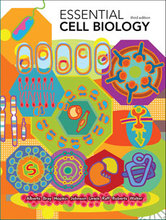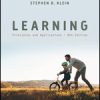Essential Cell Biology Alberts 3rd Edition Test Bank
$35.00 Original price was: $35.00.$26.50Current price is: $26.50.
Essential Cell Biology Alberts 3rd Edition Test Bank
Essential Cell Biology Alberts 3rd Edition Test Bank

Product details:
- ISBN-10 : 0815341296
- ISBN-13 : 978-0815341291
- Author: Alberts
Essential Cell Biology provides an accessible introduction to the fundamental concepts of cell biology. Its lively writing and exceptional illustrations make it the ideal textbook for a first course in cell and molecular biology. The text and figures are easy-to-follow, accurate, clear, and engaging for the introductory student. Molecular detail has been kept to a minimum in order to provide the reader with a cohesive, conceptual framework of the basic science that underlies our current understanding of biology. The Third Edition is thoroughly updated scientifically, yet maintains the academic level and size of the previous edition. The book is accompanied by a Media DVD-ROM with over 130 animations and videos, all the figures from the book, and a new self-test quizzing feature for students.
Table contents:
| Chapter 1 | Introduction to Cells | 1 |
| Panel 1-1 | Light and electron microscopy | 8 |
| Panel 1-2 | Cells: the principal features of animal, plant, and bacterial cells | 25 |
| How We Know: Life’s common mechanisms | 30 | |
| Chapter 2 | Chemical Components of Cells | 39 |
| How We Know: What are macromolecules? | 60 | |
| Panel 2-1 | Chemical bonds and groups | 66 |
| Panel 2-2 | The chemical properties of water | 68 |
| Panel 2-3 | An outline of some of the types of sugars | 70 |
| Panel 2-4 | Fatty acids and other lipids | 72 |
| Panel 2-5 | The 20 amino acids found in proteins | 74 |
| Panel 2-6 | A survey of the nucleotides | 76 |
| Panel 2-7 | The principal types of weak noncovalent bonds | 78 |
| Chapter 3 | Energy, Catalysis, and Biosynthesis | 83 |
| Panel 3-1 | Free energy and biological reactions | 96 |
| How We Know: Using kinetics to model and manipulate metabolic pathways | 103 | |
| Chapter 4 | Protein Structure and Function | 119 |
| Panel 4-1 | A few examples of some general protein functions | 120 |
| How We Know: Probing protein structure | 129 | |
| Panel 4-2 | Four different ways of depicting a small protein | 132 |
| Panel 4-3 | Cell breakage and initial fractionation of cell extracts | 160 |
| Panel 4-4 | Protein separation by chromatography | 162 |
| Panel 4-5 | Protein separation by electrophoresis | 163 |
| Panel 4-6 | Making and using antibodies | 164 |
| Chapter 5 | DNA and Chromosomes | 169 |
| How We Know: Genes are made of DNA | 172 | |
| Chapter 6 | DNA Replication, Repair, and Recombination | 195 |
| How We Know: Finding replication origins | 198 | |
| Chapter 7 | From DNA to Protein: How Cells Read the Genome | 229 |
| How We Know: Cracking the genetic code | 246 | |
| Chapter 8 | Control of Gene Expression | 267 |
| How We Know: Gene regulation–the story of eve | 282 | |
| Chapter 9 | How Genes and Genomes Evolve | 293 |
| How We Know: Counting genes | 314 | |
| Chapter 10 | Manipulating Genes and Cells | 323 |
| How We Know: Sequencing the human genome | 334 | |
| Chapter 11 | Membrane Structure | 365 |
| How We Know: Measuring membrane flow | 384 | |
| Chapter 12 | Membrane Transport | 389 |
| How We Know: Squid reveal secrets of membrane excitability | 414 | |
| Chapter 13 | How Cells Obtain Energy from Food | 427 |
| Panel 13-1 | Details of the 10 steps of glycolysis | 432 |
| How We Know: Unraveling the citric acid cycle | 442 | |
| Panel 13-2 | The complete citric acid cycle | 450 |
| Chapter 14 | Energy Generation in Mitochondria and Chloroplasts | 453 |
| How We Know: How chemiosmotic coupling drives ATP synthesis | 460 | |
| Panel 14-1 | Redox potentials | 471 |
| Chapter 15 | Intracellular Compartments and Transport | 497 |
| How We Know: Tracking protein and vesicle transport | 520 | |
| Chapter 16 | Cell Communication | 533 |
| How We Know: Untangling cell signaling pathways | 561 | |
| Chapter 17 | Cytoskeleton | 573 |
| How We Know: Pursuing motor proteins | 586 | |
| Chapter 18 | Cell-Cycle Control and Cell Death | 611 |
| How We Know: Discovery of cyclins and Cdks | 618 | |
| Chapter 19 | Cell Division | 637 |
| Panel 19-1 | The principal stages of M phase in an animal cell | 642 |
| How We Know: Building the mitotic spindle | 646 | |
| Chapter 20 | Genetics, Meiosis, and the Molecular Basis of Heredity | 659 |
| How We Know: Reading genetic linkage maps | 682 | |
| Panel 20-1 | Some essentials of classical genetics | 685 |
| Chapter 21 | Tissues and Cancer | 697 |
| Panel 21-1 | The cell types and tissues from which higher plants are constructed | 700 |
| How We Know: Making sense of the genes that are critical for cancer | 734 | |
| Answers to Questions | A:1 | |
| Glossary | G:1 | |
| Index | I:1 |
People also search:
Essential Cell Biology
Essential Cell Biology Alberts Bray Hopkin Johnson Lewis Raff Roberts Walter
Essential Cell Biology Alberts Bray Hopkin Johnson Lewis Raff Roberts Walter 3rd
Essential Cell Biology Alberts Bray Hopkin Johnson Lewis Raff Roberts Walter 3rd Test Bank
Essential Cell Biology Alberts 3rd Edition Test Bank
Related products
Test Bank
Test Bank for Operating Systems: Internals and Design Principles, 7th Edition: William Stallings











